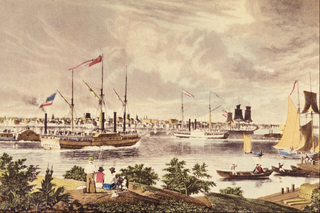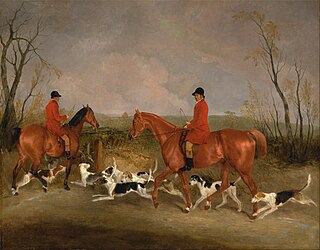
William Watson, Baron Thankerton, PC, was a Scottish Unionist Party politician and judge.
George Wilfred Anthony was an English landscape painter, art teacher and art critic.

John Wykeham Archer was a British artist, engraver and writer.

Louis Asher, originally Julius Ludwig Asher, (1804–1878) was a German artist.

Valentine Bartholomew was an English flower painter.

William James Bennett (1787−1844), was a British-born painter and engraver, active in the United States from 1816. He was a founder member of the "Associated Artists in Watercolour" in 1808. and twelve years later was elected an Associate of the Water-Colour Society.

William Henry Brooke (1772–1860) was a British artist and illustrator.

John Byrne (1786–1847) was an English painter and engraver. He came from a family of artists and he lived with his sister Elizabeth Byrne who also exhibited her landscapes.
George Bryant Campion (1795–1870) was an English watercolour landscape painter.

William Capon was an English artist.

James Wilson Carmichael, also known as John Wilson Carmichael, was a British maritime and landscape artist who painted in oil and watercolours. Based in Newcastle upon Tyne and later in London, he was a household name in his lifetime, and his work remains some of the most desirable in the marine art market. He was described by art historian Jeremy Maas as "a sea painter of great, though sometimes uneven, natural talent".

John James Chalon was a Swiss painter active in England. He treated a wide range of subjects — landscapes, marine scenes, animal life, and figure-pieces.
William Crawford ARSA (1822–1869) was a Scottish portrait and genre painter.

Nicholas Joseph Crowley was an Irish genre and portrait painter. He was highly esteemed as a portrait painter, and was especially good in painting portrait groups.

Richard Dagley (c.1761–1841) was an English subject painter and illustrator.

Richard Barrett Davis (1782–1854) was an animal and landscape painter.

Henry Gastineau (1791–1876) was an English engraver and prolific painter in water-colours. He was born in London to a family of Huguenot descent. One of his daughters, Maria Gastineau, painted in a similar style.

François Antoine Léon Fleury was a French landscape painter born in Paris. He was the son of Antoine Claude Fleury, under whom he at first studied, and then under Bertin and Hersent. Between 1827 and 1830 he made a sketching tour in France and the neighbouring countries. He occasionally painted figure subjects, such as The Baptism of Christ, at the church of St. Marguerite, and St. Genevieve, at St. Étienne-du-Mont, Paris. He died in 1858. Amongst his works are:

John H. Wilson was a Scottish landscape and marine painter, president of the Society of British Artists in 1827.

William Henry Kearney, was an English water-colour painter of landscapes and figure subjects.


















